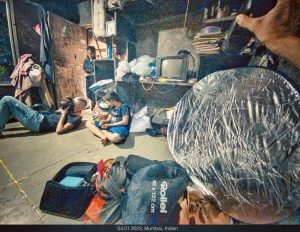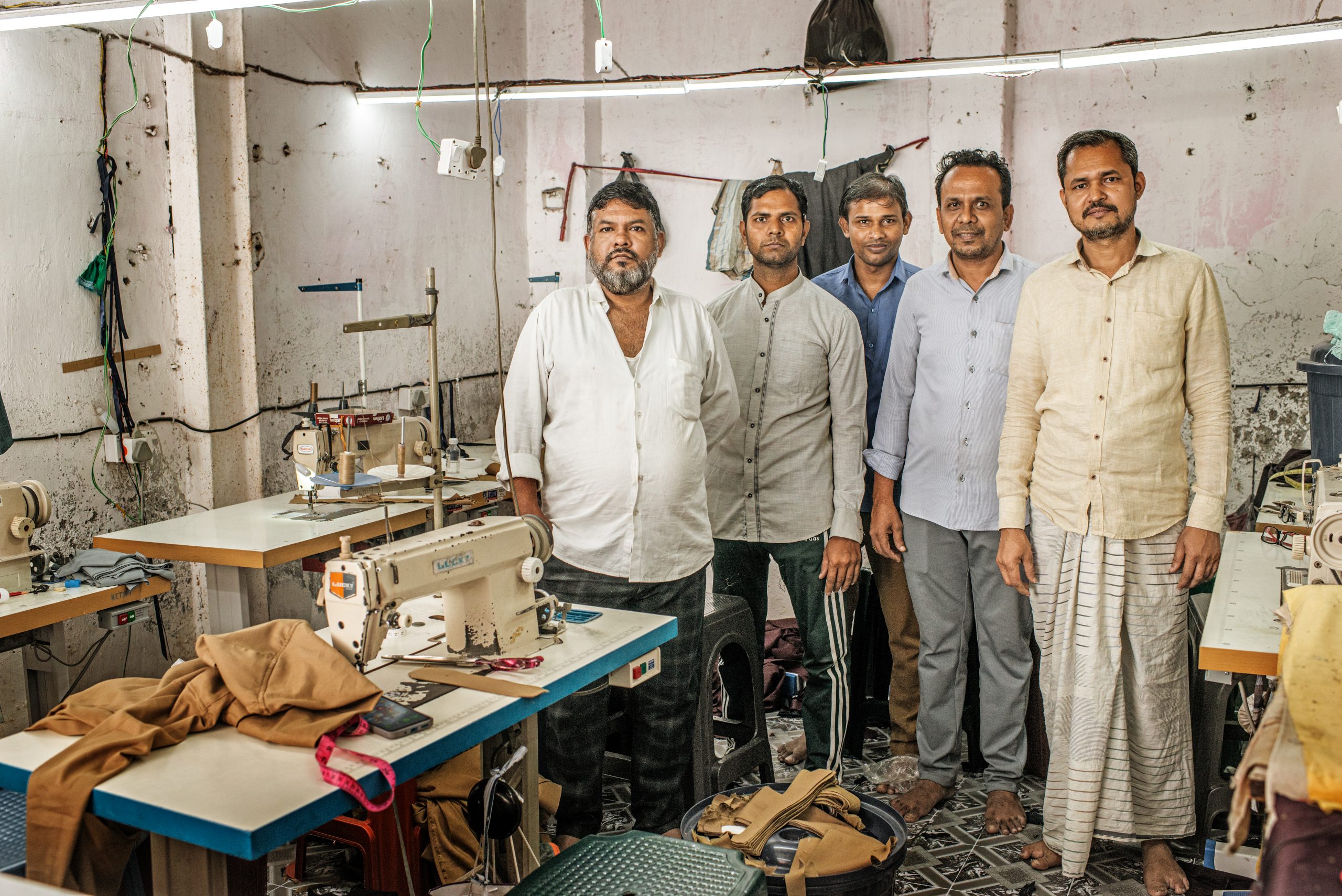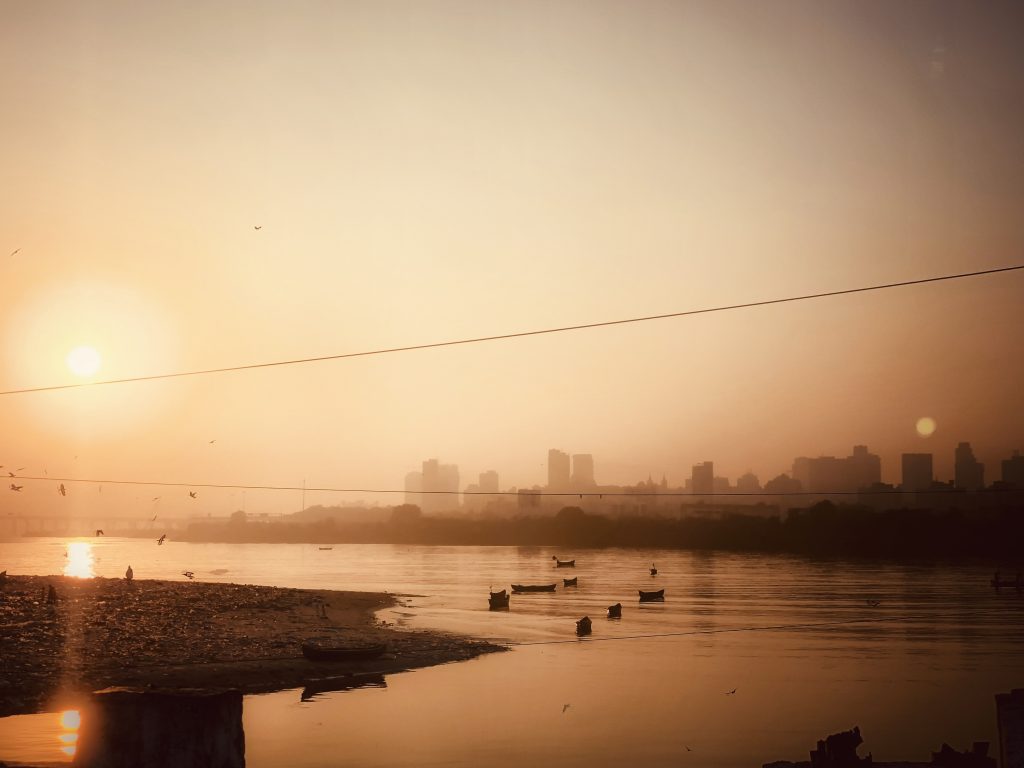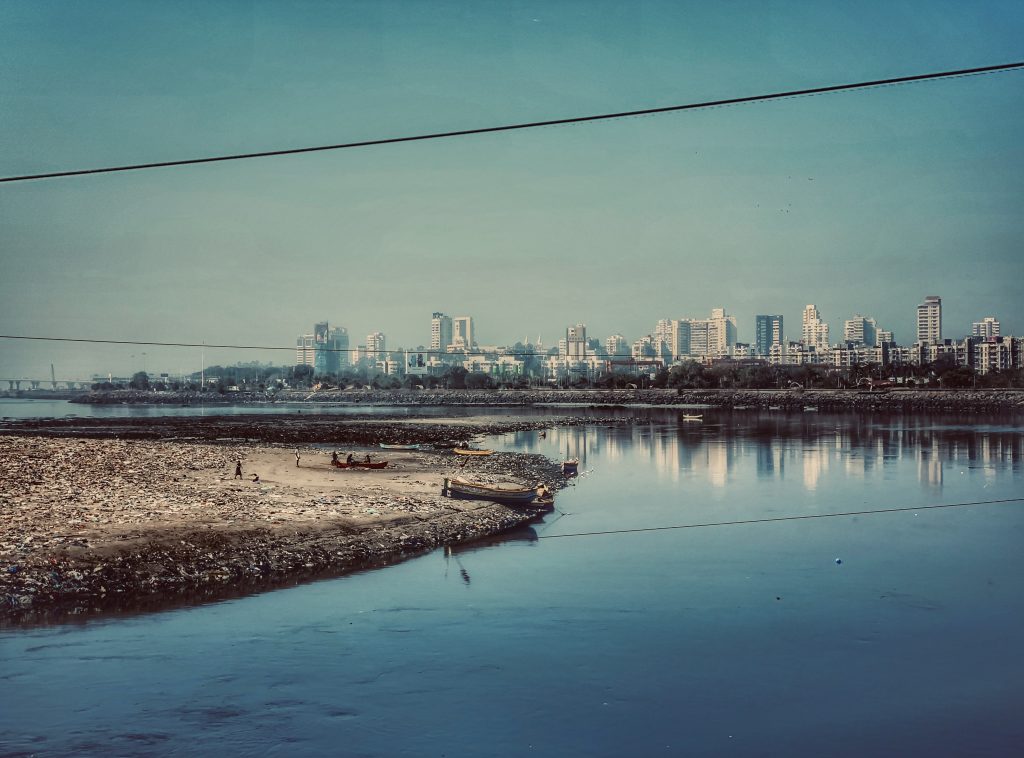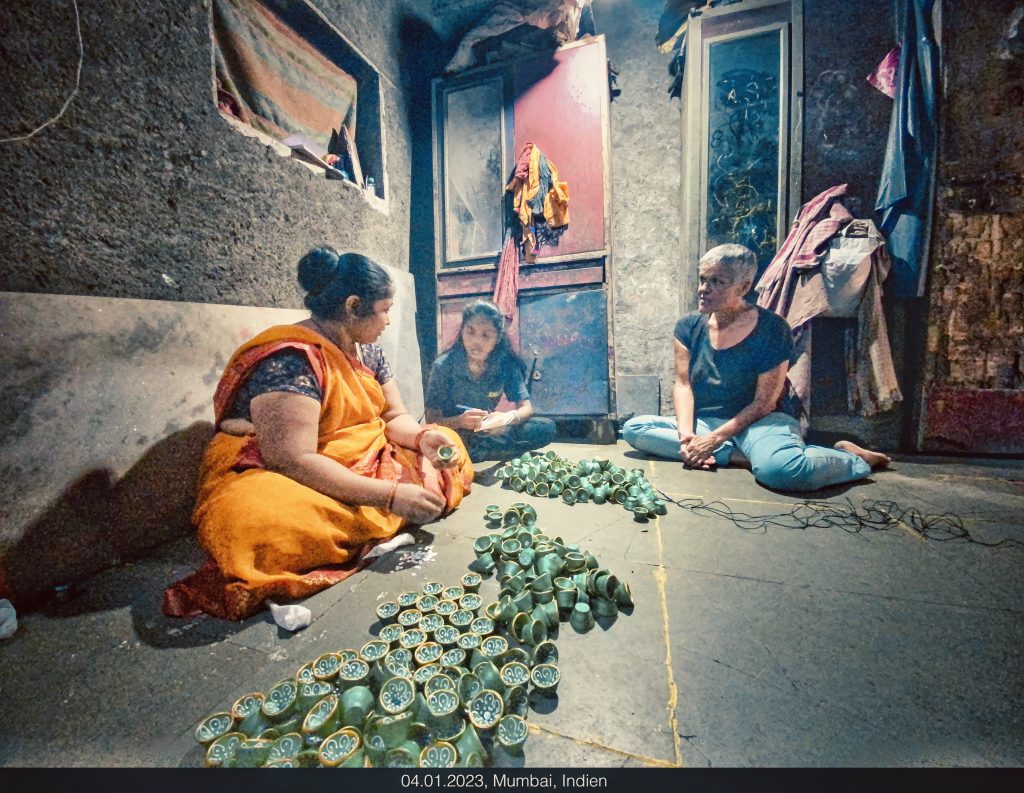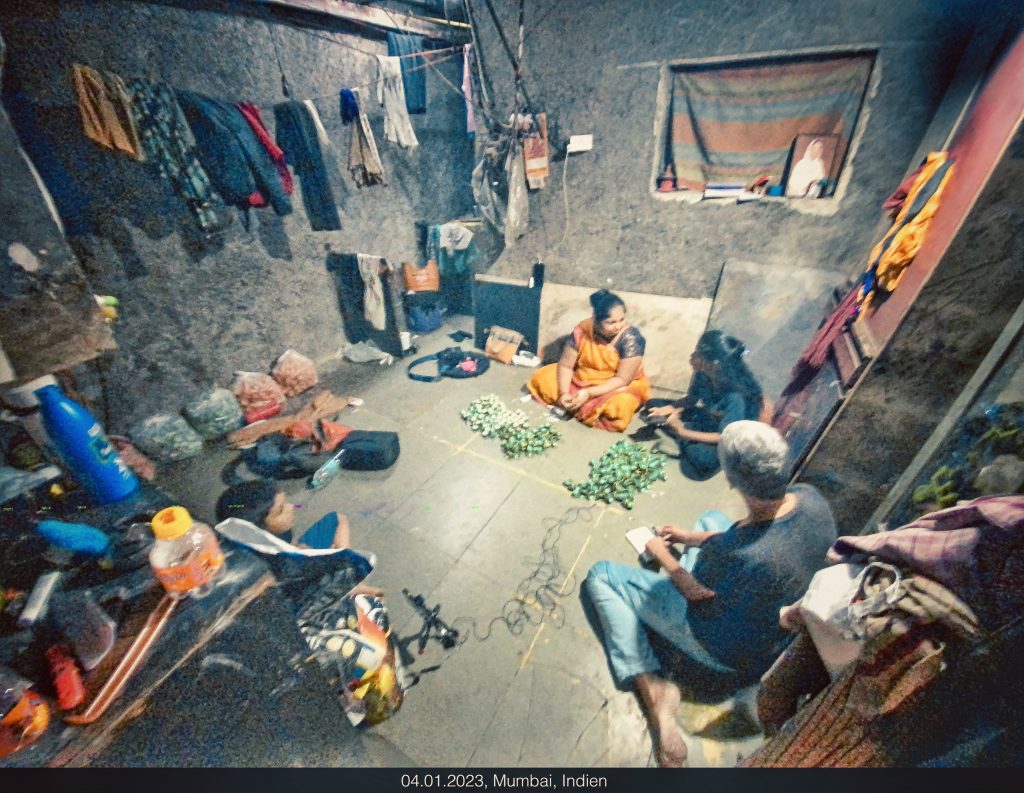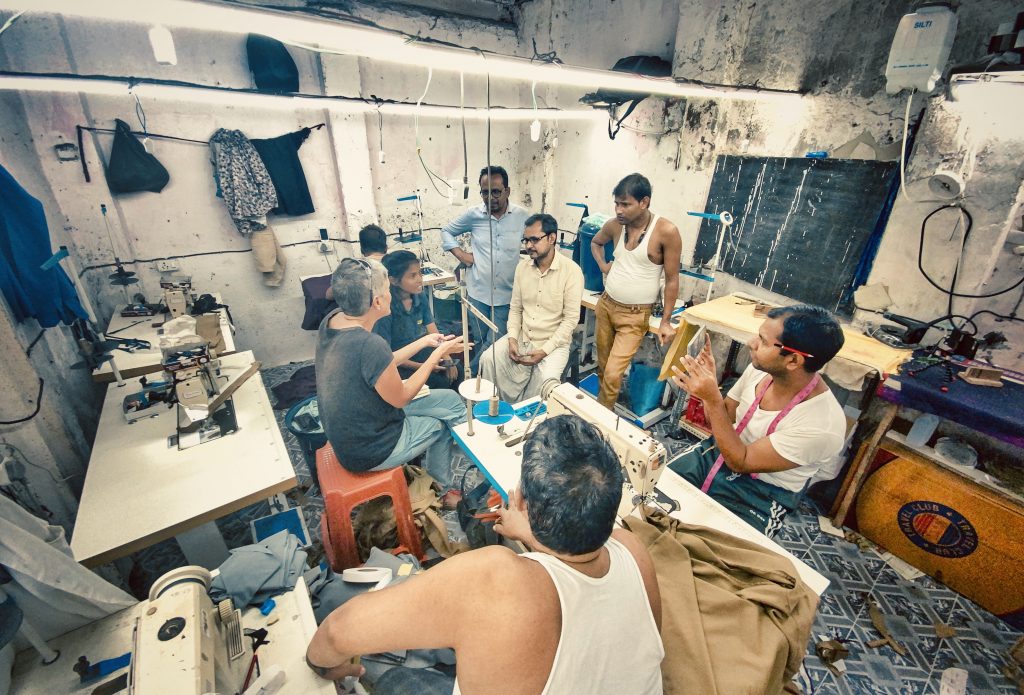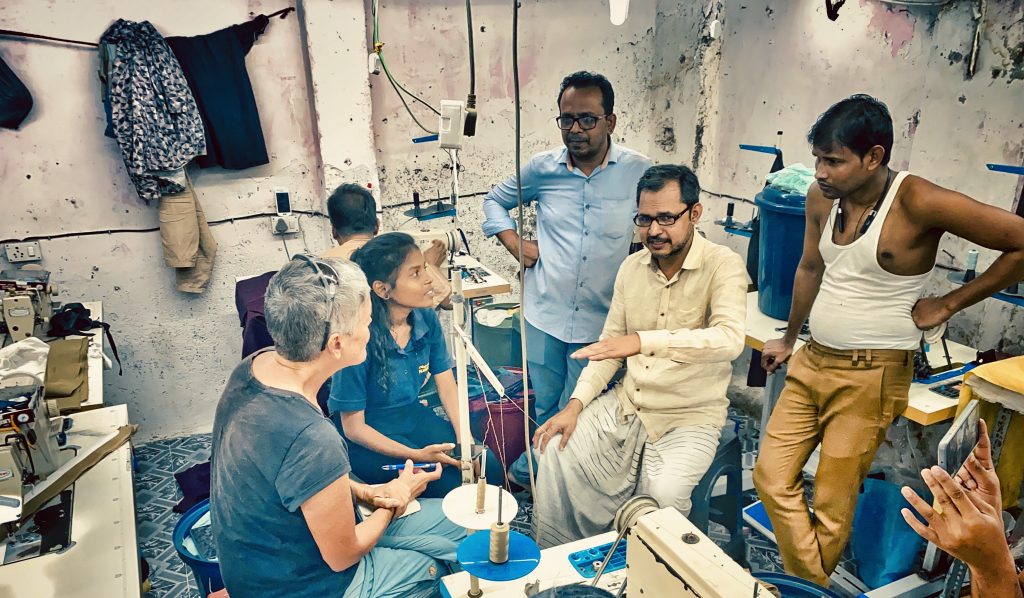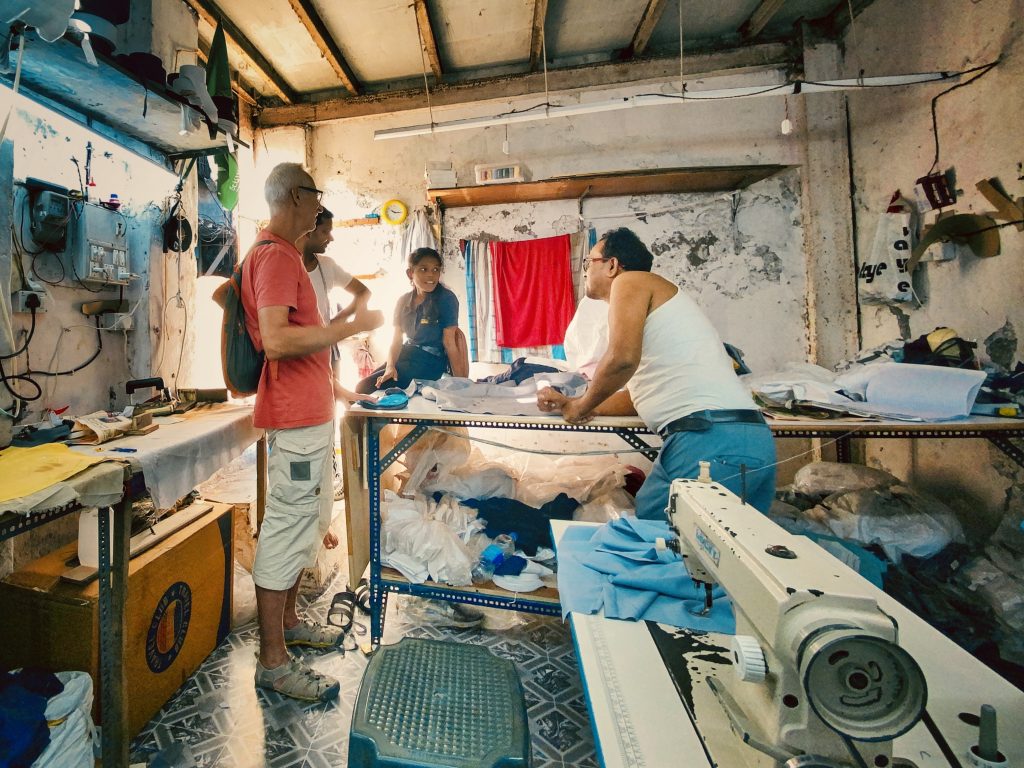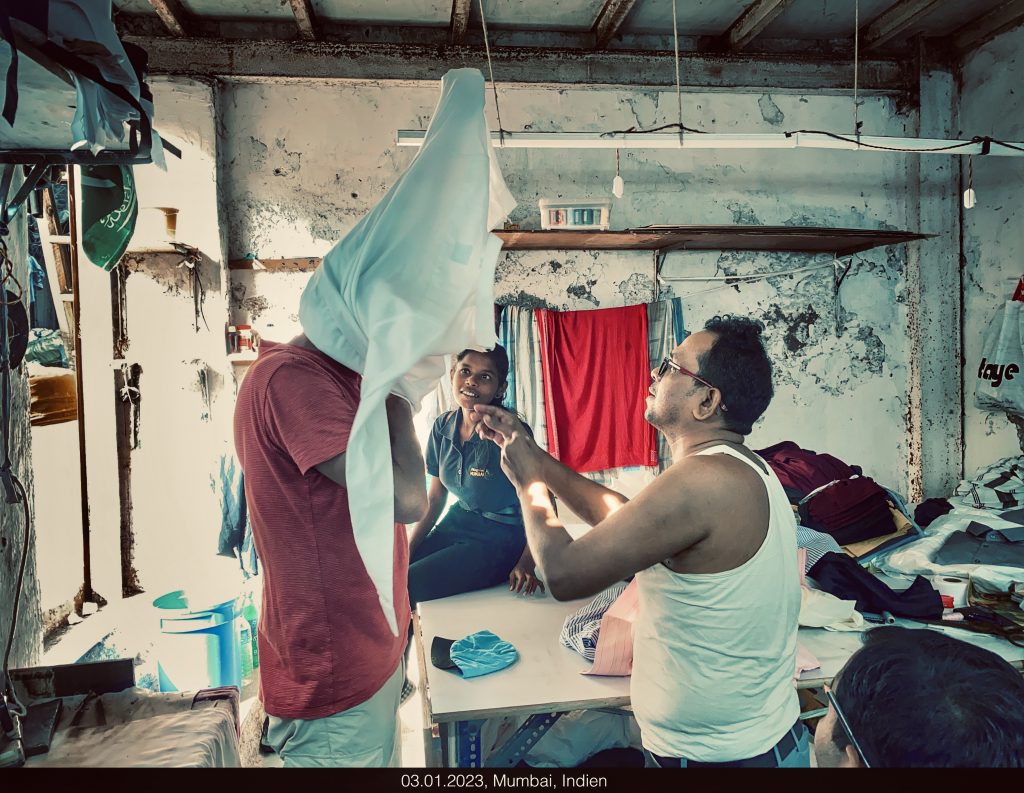or should I say “The garbage problem in India”?
The slum area has huge problems, but the garbage is not the biggest one. In fact, it seems even less garbage then in the other parts of the city.
We decided to spent some time in this area after we came in by “accident” cycling the city and found out a little bit about this place.
I will give you a short introduction to two people living and working in the Slum area Dharavi, but before one thought about garbage.
Thoughts about India
Beautiful clean beaches with azure blue sea and shady palm trees? Of flower-scented alleys with small houses and green gardens? Of romantic sunrises and sunsets with fishing boats selling the night’s catch right on the beach?
I’m pretty sure that’s not what you think about first.
Let’s face it, it is a point of view. This river we passed for the first time, when the sun was going down. The next morning, a complete different view.
We think of noisy, completely overcrowded cities with mega garbage problems and stinking rivers.
Again a matter of perspective and above all a pretty audacity to judge like that, to think like that. Of course, the latter is kind of true, but also the beaches with the azure sea without garbage, the shady palm trees, the flower-scented alleys, all this is in abundance.
But if we focus on the garbage, then we rise above the Indians and that is really an impertinence.
First of all, garbage is a wealth problem. Before that, food was wrapped in banana leaves and newspapers, which, by the way, continues to be done in rural areas. Did you know, that half of the households in Germany in the 70th had no proper garbage collection? But that’s just by the way.
Second, the problem of disposal. The infrastructure for this has to be created, and in a huge country like India, this is simply difficult and tedious.
Until then, accept that the garbage is all too often burned at the roadside. And don’t think that people don’t know that this is bad for health and the environment.
Klaus and me, cycling India, we too had to accept at some point that our garbage also ends up there on the side of the road and will be burned.
Views change, can change
But this also requires the will and the desire for change within oneself. Just think about it: how long did it take you to bring your own re-usable, re-washable bag to the grocery store?
We are in Bombay and after the first day we find ourselves in a neighborhood that is simply different. We find out that this is one of the big slums in this city. This district is one of the oldest and the rest of the city was built around it. The new districts were provided with the most necessary electricity, water and sewage. The old parts of the city were not taken into consideration.
So we are in this district and see many craftsmen, eat our first Indian dishes on the streets and try to understand.
This is not the image I have of a slum in my head
There are schools, kindergartens, hospitals. There are different craftsmen in different areas. It doesn’t stink, there are no beggars, people don’t look as poor as it should have in my head, no mutilated people.
We met Pooja. She grew up and went to school in this slum. She is now a tourist guide. Pooja leads us through even narrower alleys, showing us the hidden businesses, explaining the activities.
The slum begins to become colorful in my mind. Full of life and joie de vivre. Laughing and romping children.
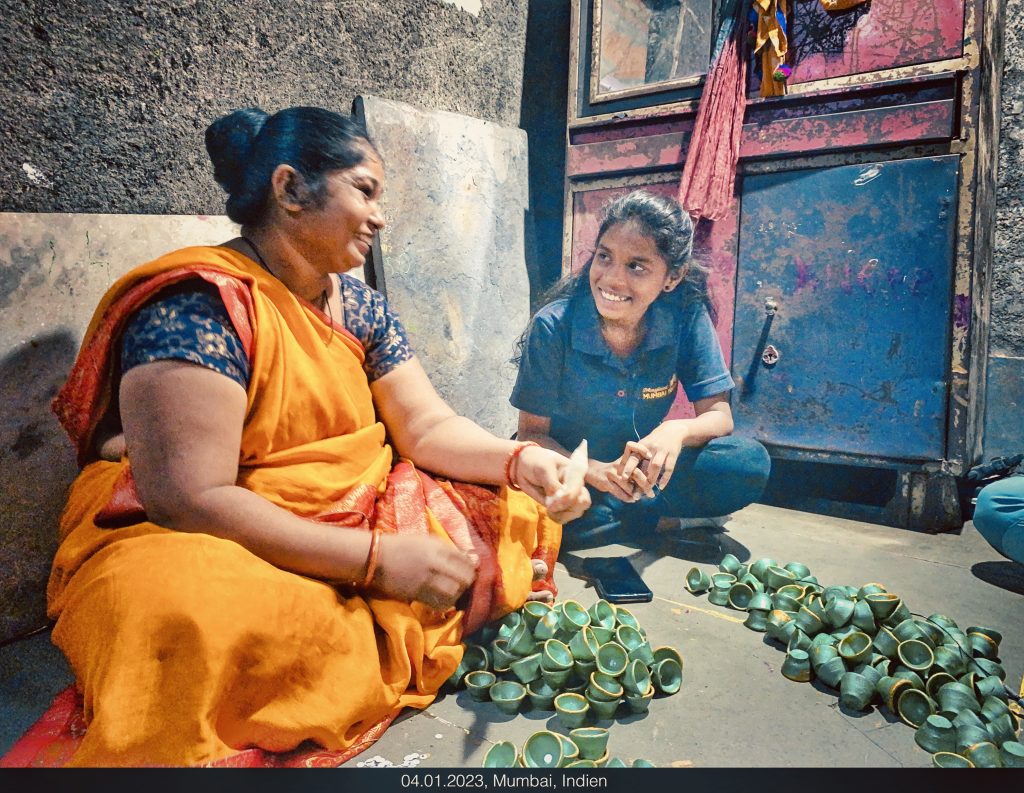
Still I do not understand what I see
We make an appointment for another day and I have questions. With this prepared questions we meet Ghulam Sadique Ali, 43 years old and he has his own business as a tailor. And we meet Mekka Arvind Gohil, 35 years old, housemaid. With Ghulam, there are 8 people living on a minuscule homes of 4×4 m², with Gohil 5 people are living in a 3x3m² spot.
This is how 2 interviews come about, which of course are certainly not representative, but give me an insight into life in this slum and above all an idea of why people choose to live here.
My questions and the answers: Gohil & Ghulam
This slum has often been considered to be one of the world’s largest slums. Dharavi has an area of just over 2.39 square kilometres (0.92 sq mi; 590 acres) and a population of about 1,000,000 maybe 3,000,000.
By the way, there is no reason to be afraid in this area. Just give it a chance, get yourself some street food and do some walking. You can even find some amazing street art or buy some stuff directly from the craftsman. This will be much cheaper then around the city, after they put some labeling on the stuff.
And don’t worry, you wont’t be cheated 🙂 Giving just a little more for this insight in some different life is every cent worth. Be a little more spendy.
Klaus has decided to buy a shirt. His current shirt for the fine occasions during our trip 🙂
